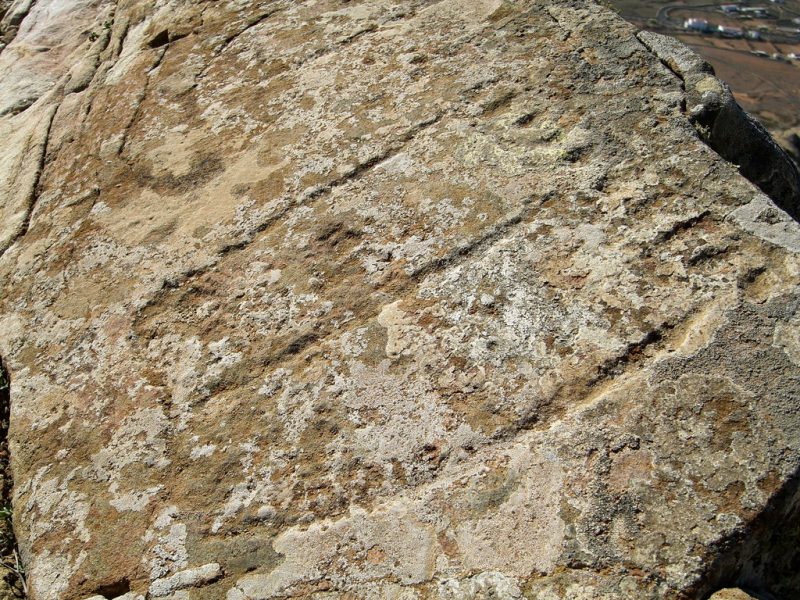According to one Iranian archaeologist, a set of stone etchings outside of Khomein, central Iran, might be one of the oldest examples of rock art ever discovered.
Found by Dr. Mohammed Naserifard, the ancient pictures depict hunters, tribal rituals, and animals such as dogs and ibex.
The oldest carving, a line of cup-marks possibly used in religious ceremonies, might be more than 40,000 years old.
Naserifard happened upon the carvings in 2002 while on a hiking trip with friends. “We were on a picnic, and all my friends were taking an afternoon nap,” he recounts. “I went wandering and observing the rocks in the valley, and I found a rock full of shapes. I was so excited! Finding these works was like finding a treasure.”
Oldest Rock Etchings Found in #Iran? #ancienthistoryhttps://t.co/ac0UJfiEKn pic.twitter.com/uEWZpzhrJi
— Road2Ruins (@Road2Ruins) January 15, 2017
Since then, Naserifard has traveled more than 450,000 miles looking for similar art, uncovering an estimated 50,000 carvings.
His contribution to our understanding of prehistoric humans has not gone unnoticed by the international scientific community, as he’s been recognized by many NGOs and researchers around the world. “His work is really important — there have been these blank spots on the map that we are finally starting to fill in,” said Genevieve von Petzinger, a Canadian cave art expert and the author of The First Signs: Unlocking the Mysteries of the World’s Oldest Symbols.
Iranian archaeologist finds the ‘oldest stone etchings in the world’ https://t.co/IM8fQVPHK8 pic.twitter.com/eopyZFS45Q
— newswatchoz (@newswatchoz) December 17, 2016
Iran’s location at the edge of both the African and Asian continents makes it an important link for studying the paths of early human migration. The prevalence of rock art in the Khomein region is further proof that this once-fertile spot was the site of prehistoric human settlements, as The Daily Mail reports.
Iranian archaeologist uncovers what may be world’s oldest rock etchings: https://t.co/IZsfMeMrLx
— WA Archaeology (@WA_Arch) December 20, 2016
Unfortunately, accurately dating these carvings is nearly impossible given the current political climate in Iran. Instability in the region and sanctions imposed on Iran by the international community have resulted in a lack of funding, with Iranian scientists unable to access the necessary resources. Held back by these challenges, Naserifard can only uncover so much. “Dr. Naserifard has done all this diligent work,” said von Petzinger, “but he needs access to the big labs. Hopefully, people can now come to help him.”
Iranian Researcher Finds Some of the Oldest Rock Etchings In Existence https://t.co/RZA5wyVhRG pic.twitter.com/seWKq6KcC6
— Before It’s News (@beforeitsnews) December 18, 2016
Scientists have taken it upon themselves to explain the prevalence of ibex deer in engravings, which account for more than 90% of the carvings cataloged by Naserifard. Although the reason for it is unknown, the early humans’ fixation with ibex is consistent with other prehistoric civilizations who also obsessed over specific animals or images. This theme supports the theory that humans may have developed a common artistic tradition before their migration from Africa. “We don’t know why they picked a favorite motif and ran with it,” said Peter Robinson of the Bradshaw Foundation (a Swiss NGO that has supported Naserifard), “but we see the same pattern in very different places.”
Read another story from us: Beckery Chapel, the oldest monastery in the British Isles
Now that the sanctions against Iran have been lifted by last year’s nuclear deal between Iran and the United States, Dr. Naserifard is hopeful that he will finally be able to make important progress. “We hope with the situation improving now, we can soon bring this technology to Iran,” he said, “and gain more accurate and scientific information on these engravings.”
